
Eysturoy Island: The Heart of the Faroe Islands
Discover the enchanting Eysturoy Island in the Faroe Islands, where dramatic landscapes meet rich cultural heritage and endless outdoor adventures await.
Eysturoy Island, the second largest of the Faroe Islands, offers a mix of stunning natural beauty and rich cultural experiences. The island is known for its dramatic landscapes, including the highest peak in the Faroe Islands, Slættaratindur, which stands at 880 meters. Hikers and nature lovers will find this destination a paradise, with trails that offer breathtaking views of fjords, valleys, and waterfalls. The island is also home to some charming villages like Gjógv, famous for its natural harbor and colorful houses. Visitors can immerse themselves in the local culture by exploring traditional Faroese architecture and enjoying local cuisine in cozy cafés. The village of Eiði is another gem, known for its picturesque church and stunning views of the Risin and Kellingin sea stacks. Eysturoy is not just about the scenery; it also offers plenty of activities. From bird watching to fishing, there is something for everyone. The waters around Eysturoy are teeming with marine life, making it a great spot for fishing excursions. The island's unique blend of natural wonders and cultural heritage makes it a must-visit destination in the Faroe Islands.
Local tips in Eysturoy Island
- Visit in late spring or summer to experience the best weather and longer daylight hours.
- Bring sturdy hiking boots for exploring the island's rugged terrain.
- Check the local ferry schedules in advance if planning to travel between islands.
- Don't miss the village of Gjógv for its beautiful natural harbor and charming atmosphere.
- Try the local Faroese cuisine, especially the fresh seafood.
Eysturoy Island: The Heart of the Faroe Islands
Eysturoy Island, the second largest of the Faroe Islands, offers a mix of stunning natural beauty and rich cultural experiences. The island is known for its dramatic landscapes, including the highest peak in the Faroe Islands, Slættaratindur, which stands at 880 meters. Hikers and nature lovers will find this destination a paradise, with trails that offer breathtaking views of fjords, valleys, and waterfalls. The island is also home to some charming villages like Gjógv, famous for its natural harbor and colorful houses. Visitors can immerse themselves in the local culture by exploring traditional Faroese architecture and enjoying local cuisine in cozy cafés. The village of Eiði is another gem, known for its picturesque church and stunning views of the Risin and Kellingin sea stacks. Eysturoy is not just about the scenery; it also offers plenty of activities. From bird watching to fishing, there is something for everyone. The waters around Eysturoy are teeming with marine life, making it a great spot for fishing excursions. The island's unique blend of natural wonders and cultural heritage makes it a must-visit destination in the Faroe Islands.
When is the best time to go to Eysturoy Island?
Iconic landmarks you can’t miss
Kirkjubømúrurin
Explore Kirkjubøur, a historic village in the Faroe Islands, rich in ancient structures and breathtaking landscapes, embodying the islands' cultural heritage.
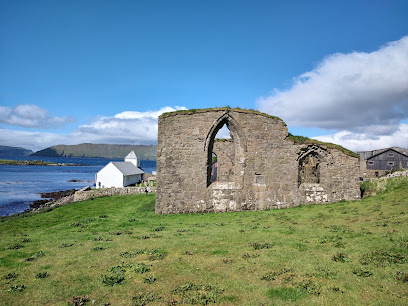
Gjógv Natural Harbour
Explore the stunning beauty of Gjógv Natural Harbour, a top tourist attraction in the Faroe Islands, where nature and adventure await.
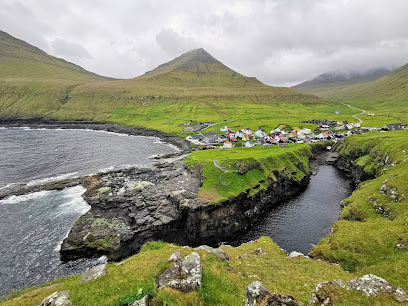
Fossá
Discover Fossá, the highest waterfall in the Faroe Islands, where nature's beauty meets serene tranquility amidst stunning landscapes.
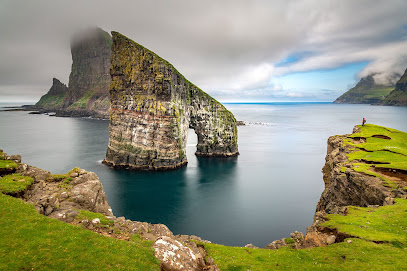
The Nordic House
Discover the rich culture of the Faroe Islands at The Nordic House, a vibrant center of art, exhibitions, and local cuisine in Tórshavn.
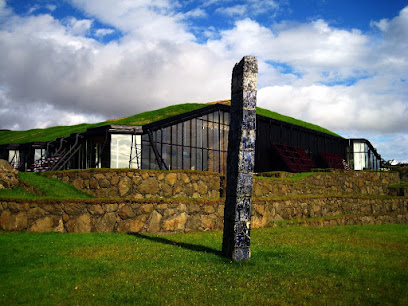
Skansin
Explore Skansin in Tórshavn, a historic fortress offering stunning views and a glimpse into the rich maritime history of the Faroe Islands.
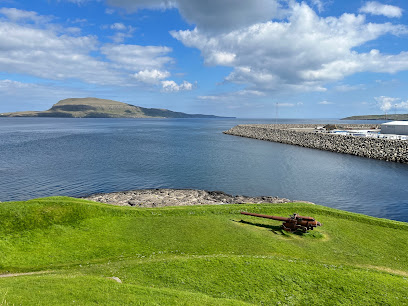
View on Mullafossur and Gasadalur village
Discover the stunning Mullafossur Waterfall and charming Gasadalur village, a must-see natural wonder in the heart of the Faroe Islands.

The Seal Woman (Kópakonan)
Explore the mythical tale of The Seal Woman in Mikladalur, a captivating sculpture that embodies the rich folklore and natural beauty of the Faroe Islands.
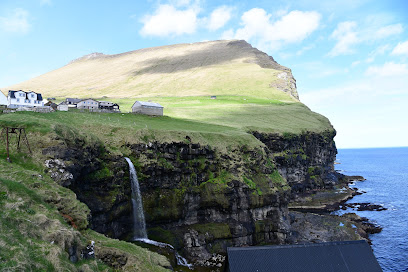
Trælanípa
Explore Trælanípa, an iconic cliff in the Faroe Islands, where nature's beauty meets breathtaking views and rich local history.
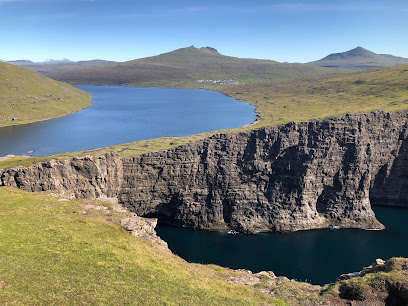
The National Gallery of The Faroe Islands
Explore the vibrant art scene at The National Gallery of The Faroe Islands, showcasing local creativity and culture in Tórshavn.
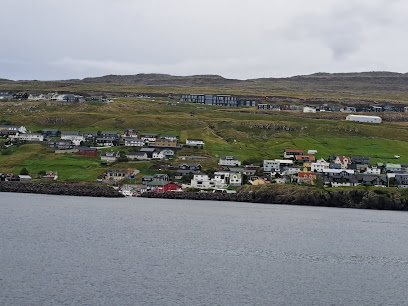
Tjóðsavnið (Faroe Islands National Museum)
Explore the rich history and vibrant culture of the Faroe Islands at Tjóðsavnið, the National Museum showcasing archaeological and natural wonders.

Kallur Lighthouse
Explore the breathtaking views and natural beauty of Kallur Lighthouse, a stunning hiking destination in the heart of the Faroe Islands.
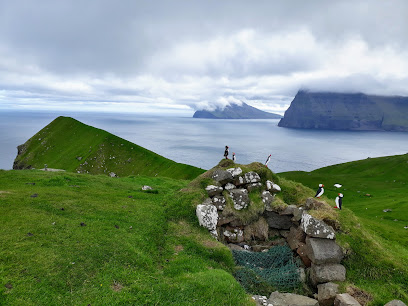
Dúvugarðar Heritage Farm
Explore Dúvugarðars Heritage Farm in the Faroe Islands for a unique blend of history, culture, and breathtaking landscapes.
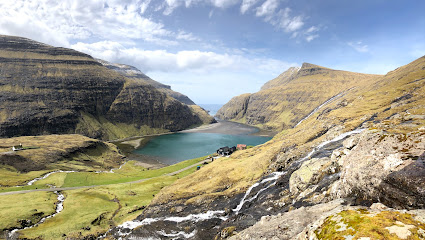
Slave Cliff (Lake Above the Ocean)
Explore Slave Cliff's breathtaking hiking trails and stunning ocean views, a spectacular gem in the heart of the Faroe Islands.

Giljanes Hostel & Campsite
Experience the Faroe Islands at Giljanes Hostel & Campsite - your cozy retreat in the heart of nature, with stunning views and vibrant community.

Klakkur
Explore the majestic Klakkur mountain in the Faroe Islands, offering breathtaking views and unforgettable hiking experiences for all adventurers.
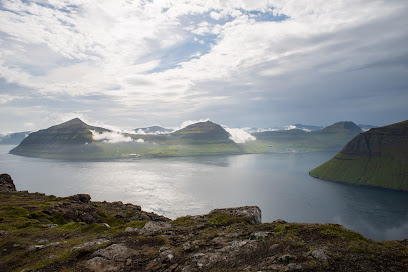
Unmissable attractions to see
Vestmanna Tourist Centre
Experience the charm of the Faroe Islands at Vestmanna Tourist Centre, your gateway to adventure with boat tours, local cuisine, and cultural treasures.
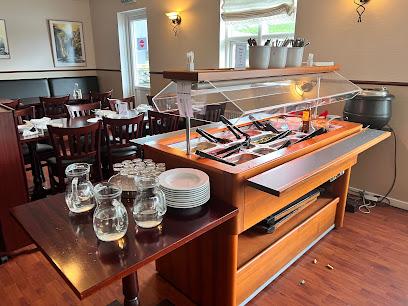
Witches Finger Trail
Explore the Witches Finger Trail in the Faroe Islands – a breathtaking hike through nature and folklore, perfect for all adventure seekers.
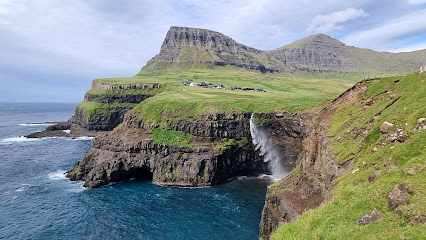
Vesturkirkjan
Discover the architectural beauty and serene atmosphere of Vesturkirkjan, a stunning Lutheran church in the heart of Tórshavn.
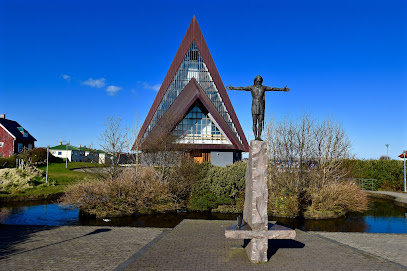
Eysturoy Tunnel
Explore the Eysturoy Tunnel, an engineering masterpiece connecting Streymoy and Eysturoy in the breathtaking Faroe Islands, with stunning landscapes at every turn.
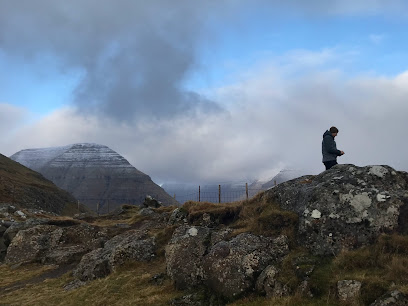
Trappan
Experience the serene beauty of Trappan, a city park in Tórshavn with stunning views and a peaceful atmosphere, perfect for leisurely strolls and relaxation.

Reistu búgv á hesum stað 1833
Explore the serene Reistu búgv á hesum stað, a memorial park in Skopun, Faroe Islands, where nature meets history in breathtaking beauty.
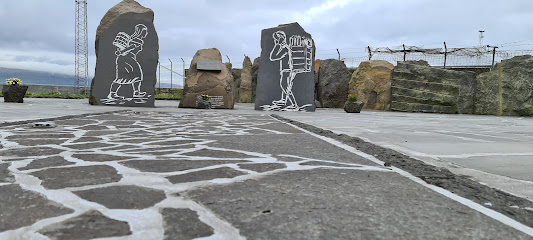
Hole in the Cliff
Experience the breathtaking beauty of Hole in the Cliff, a stunning natural attraction in the Faroe Islands, perfect for nature lovers and photography enthusiasts.
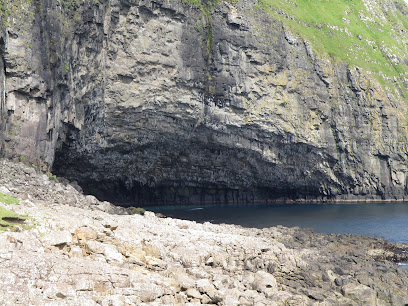
Báta- og Listasavnið(Boat and Art Museum)
Explore the rich maritime heritage and contemporary art at Báta- og Listasavnið Museum in the stunning Faroe Islands.
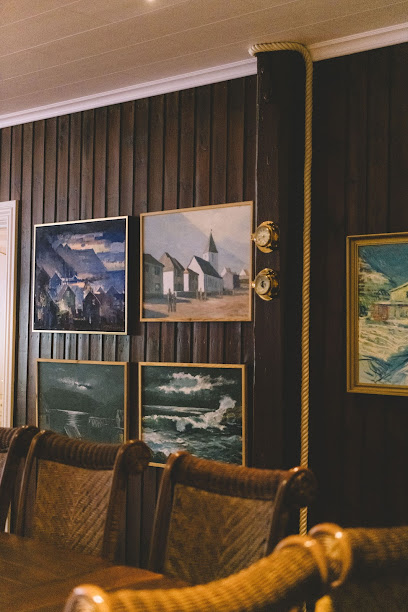
Vestmanna
Experience the breathtaking landscapes, rich culture, and warm hospitality of Vestmanna, a hidden gem in the Faroe Islands.
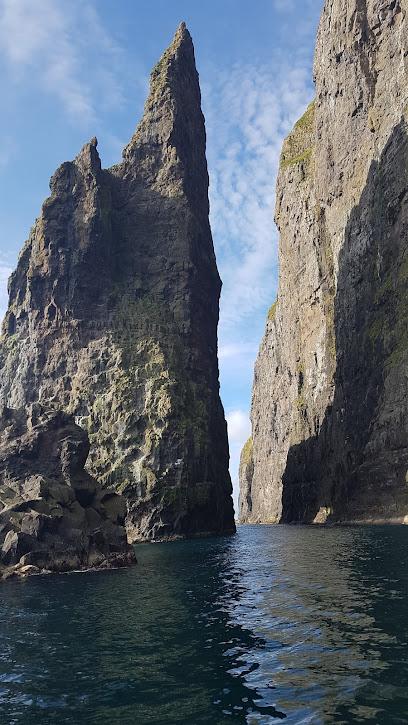
Essential places to dine
Angus Steakhouse
Experience exceptional dining at Angus Steakhouse in Tórshavn, where premium steaks meet Faroese flavors for an unforgettable meal.
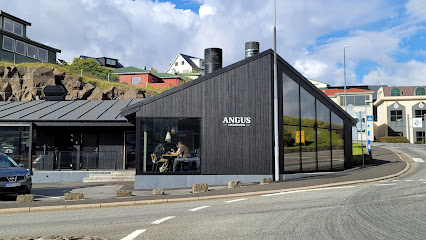
Gjaargardur Guesthouse Gjogv
Discover authentic Faroese cuisine at Gjaargardur Guesthouse in Gjógv—where local flavors meet stunning island views.
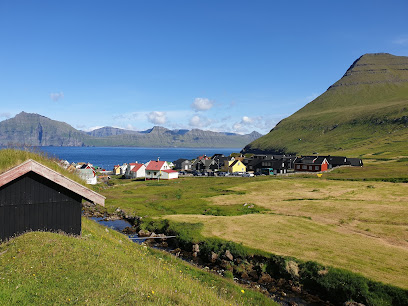
Áarstova
Experience authentic Faroese cuisine at Áarstova - where tradition meets culinary innovation in Tórshavn.
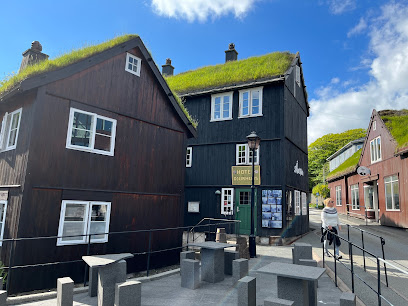
Barbara Fish House
Experience exquisite seafood dining at Barbara Fish House in Tórshavn - where fresh catches meet Faroese culinary traditions.
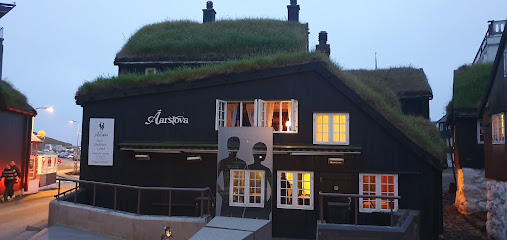
Koks Restaurant
Experience innovative Faroese cuisine at Koks Restaurant - where local ingredients meet culinary artistry in breathtaking surroundings.
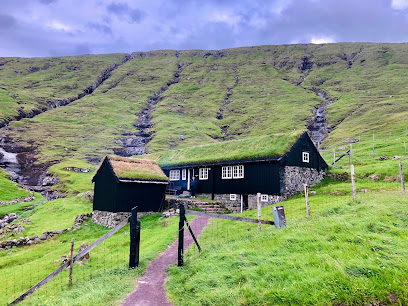
Rose's Restaurant & Catering
Discover culinary excellence at Rose's Restaurant & Catering in the heart of the Faroe Islands—where local flavors meet stunning views.
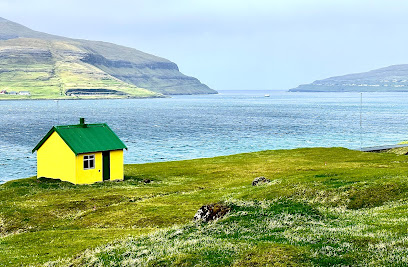
Angus Steakhouse Klaksvík
Experience premium steaks and local flavors at Angus Steakhouse Klaksvík amidst breathtaking Faroe Islands scenery.
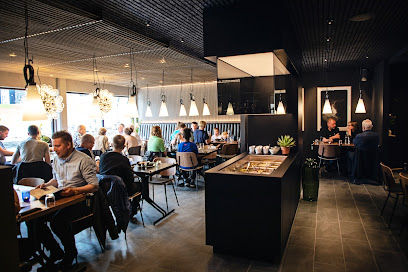
Fisk og Kips
Discover authentic Faroese fish and chips at Fisk og Kips in Tórshavn - where fresh seafood meets cozy ambiance.
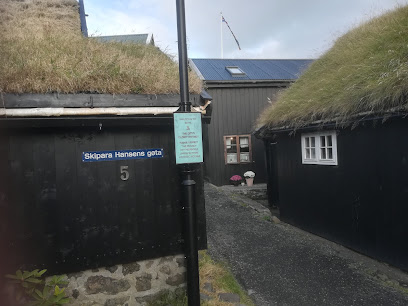
Kafe Umami
Discover Kafe Umami: A Culinary Gem in Tórshavn Blending Local Ingredients with International Flavors.
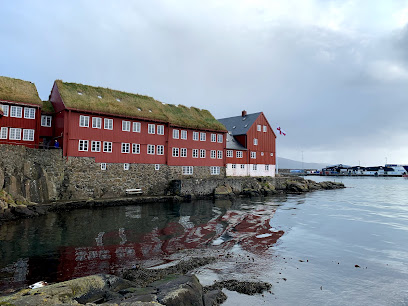
Suppugarðurin
Discover Suppugarðurin: Tórshavn's premier destination for authentic ramen, blending Japanese tradition with Faroese charm.
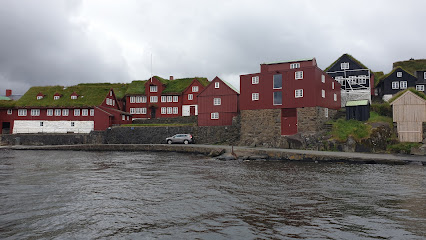
Muntra
Discover Muntra: A must-visit restaurant in Fuglafjørður offering authentic Faroese cuisine with fresh local ingredients.
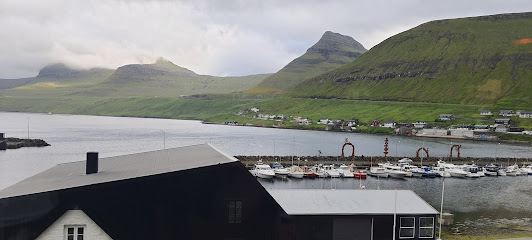
Seven
Experience authentic Chinese flavors at Seven in Tórshavn - where every dish tells a story.
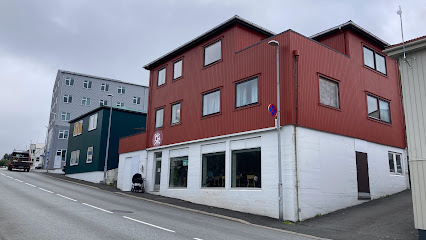
ROKS
Experience authentic Faroese cuisine at ROKS in Tórshavn - where local flavors meet modern culinary artistry.
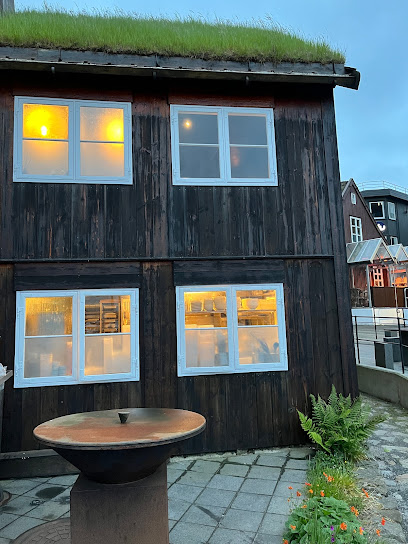
Skeiva pakkhús
Experience authentic Faroese cuisine at Skeiva Pakkhús in Tórshavn—where tradition meets modern culinary artistry.
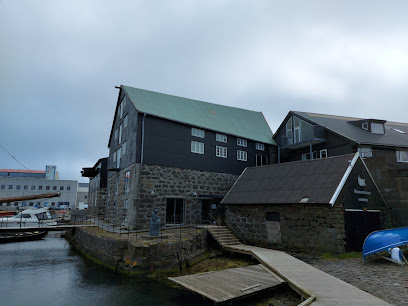
Reyðleyk Hoyvík
Experience delicious burgers and pizzas at Reyðleyk Hoyvík - a culinary delight in the heart of the Faroe Islands.
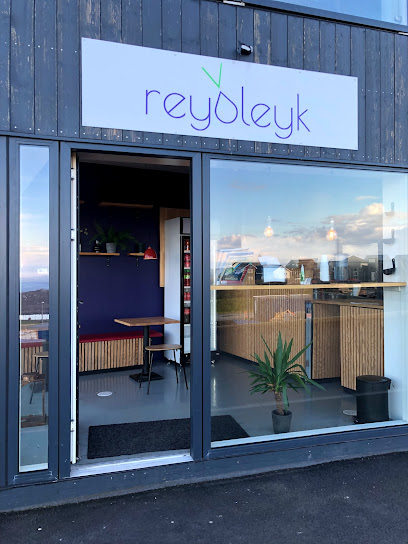
Markets, malls and hidden boutiques
Navia (yarn)
Explore Navia, the enchanting knit shop in Toftir, Faroe Islands, offering exquisite yarns and a warm community for crafting enthusiasts.
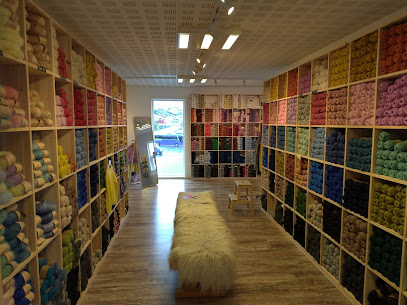
Bónus Norðskála
Explore Bónus Norðskála, your go-to grocery store in the Faroe Islands, offering a wide selection of local and international products at great prices.
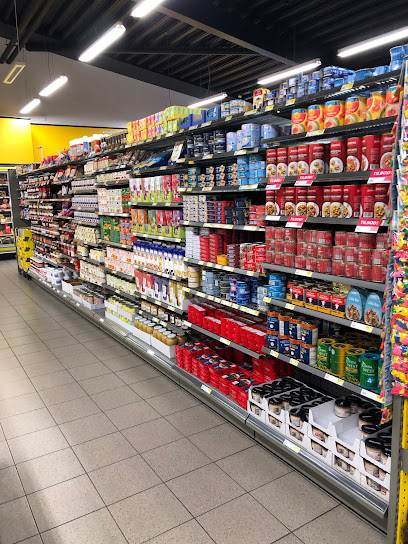
Rúsdrekkasøla Landsins - Saltangará
Discover the finest selection of local Faroese beers, wines, and spirits at Rúsdrekkasøla Landsins, Saltangará's premier liquor store.
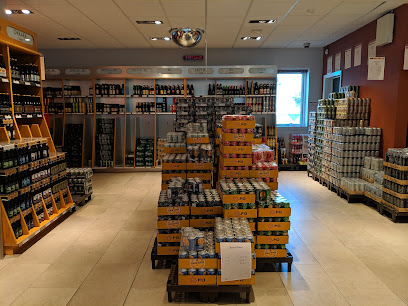
FK fuglafjørður
Explore the authentic tastes of the Faroe Islands at FK Fuglafjørður, a charming grocery store offering local delicacies and high-quality products.
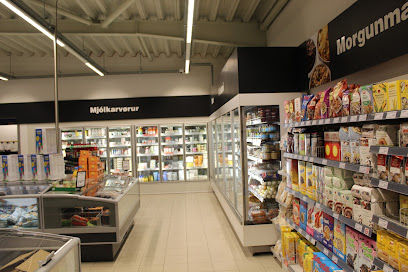
Á við Norðskála
Explore the Faroe Islands with convenience at Á við Norðskála, your local grocery store offering essentials and local produce.
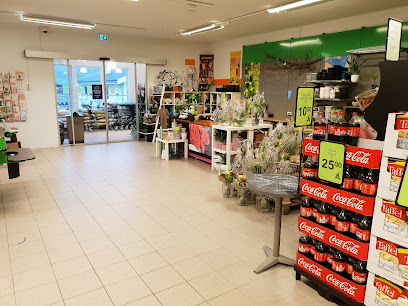
Á-Handil
Discover the flavors of the Faroe Islands at Á-Handil, a charming grocery store in Glyvrar offering local products and fresh ingredients for every traveler.
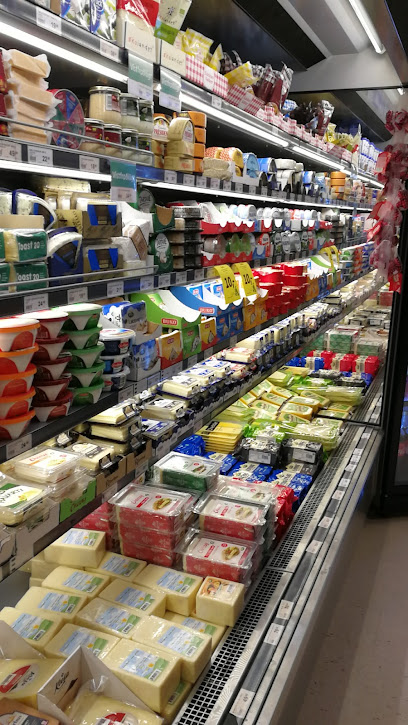
SJÓGÆTI
Experience the freshest seafood at SJÓGÆTI, the premier fish store in Norðskáli, where local flavors and sustainable practices meet.
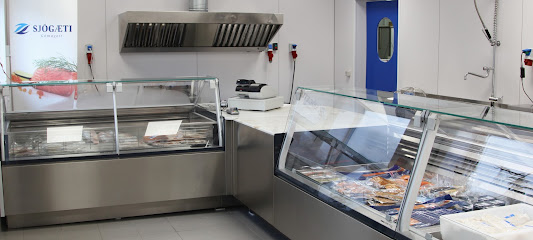
Rúsdrekkasøla Landsins - Norðskáli
Discover the rich beverage culture of the Faroe Islands at Rúsdrekkasøla Landsins, your go-to destination for local beers, wines, and spirits.
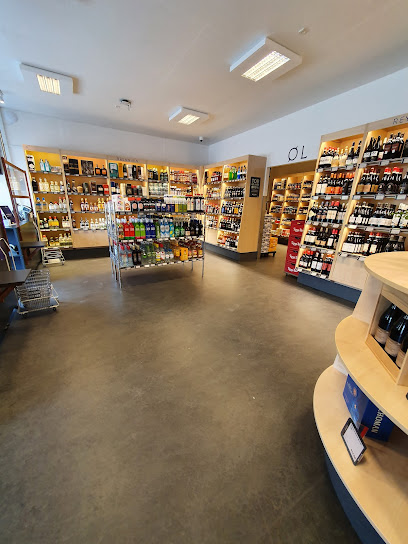
Skálin
Explore Skálin Supermarket: Your Gateway to Local Flavors and Essentials in the Heart of the Faroe Islands.
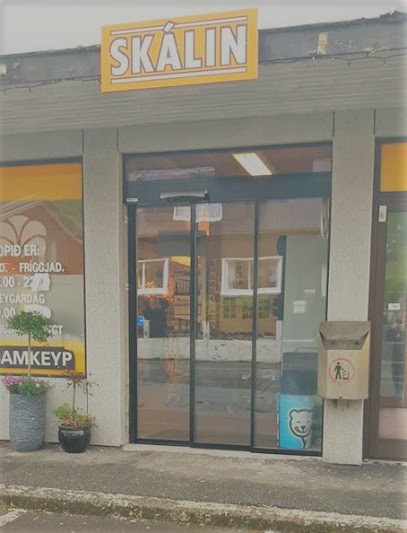
Ullvøruhúsið
Discover unique Faroese wool clothing at Ullvøruhúsið, Tórshavn's premier destination for authentic fashion and sustainable textiles.
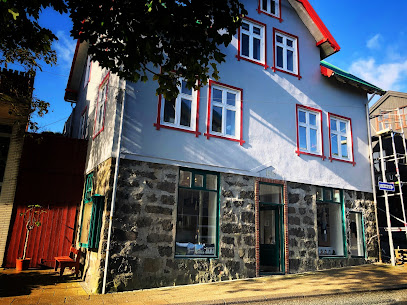
Fjord by Suffía Nón
Explore Fjord by Suffía Nón - a charming gift shop in Fuglafjørður, Faroe Islands, offering unique local crafts and souvenirs.
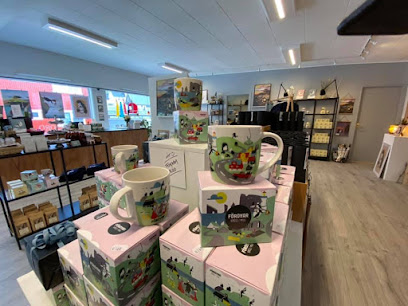
Snældan
Explore Snældan in Strendur for unique Faroese sweaters and local clothing that captures the spirit of the islands.
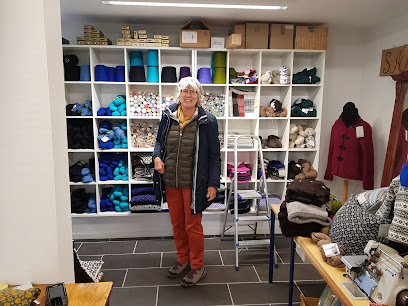
Rit & Rák
Discover Tórshavn's literary gem, Rit & Rák, where books come alive in a cozy and welcoming atmosphere perfect for every book lover.
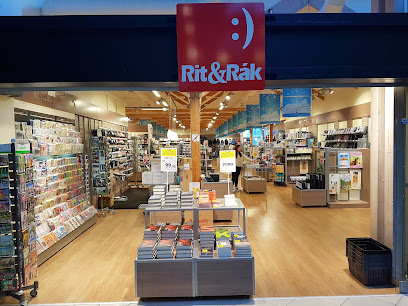
Orkis
Explore the vibrant floral offerings at Orkis, where the beauty of the Faroe Islands blooms in every arrangement.
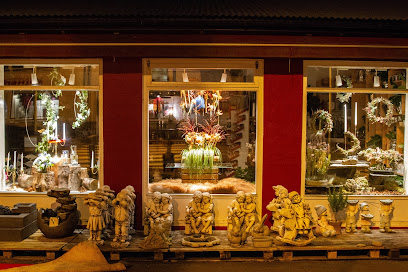
Rokoko
Discover Rokoko in Nordragota - a unique clothing store blending Faroese charm with contemporary fashion for an unforgettable shopping experience.

Essential bars & hidden hideouts
Sirkus Bar
Experience Tórshavn's nightlife at Sirkus Bar, the ultimate destination for good drinks, live music, and a vibrant atmosphere in the Faroe Islands.
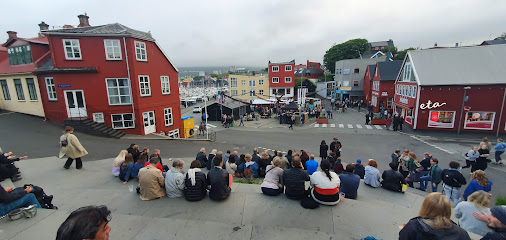
Mikkeller Tórshavn
Discover the vibrant world of craft beer at Mikkeller Tórshavn, where innovative brews meet a cozy and quirky atmosphere in the heart of the Faroe Islands.
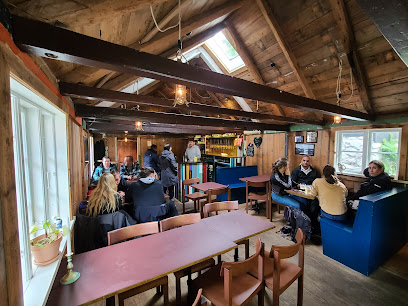
OY Brewing
Experience authentic Faroese craft beers and delicious bar food at OY Brewing, a vibrant brewpub in Tórshavn.
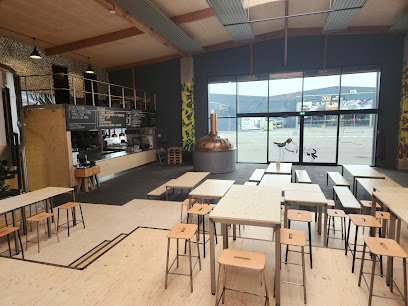
Muntra
Experience the authentic flavors of the Faroe Islands at Muntra, a hidden gem in Fuglafjørður, where local ingredients meet culinary creativity.
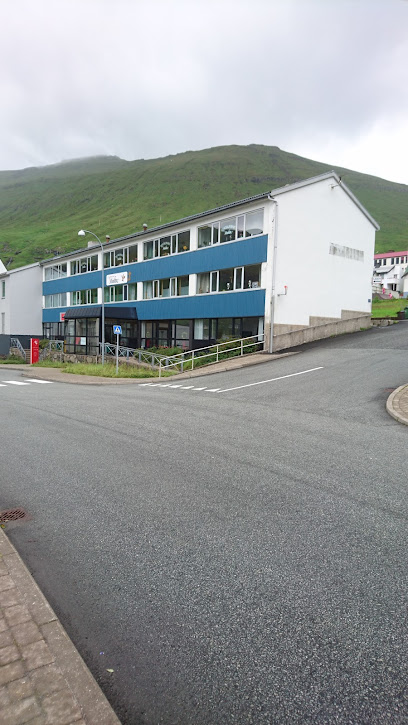
Roykstovan
Experience the vibrant nightlife at Roykstovan, a welcoming bar in Klaksvík, offering local flavors and a social atmosphere for all travelers.
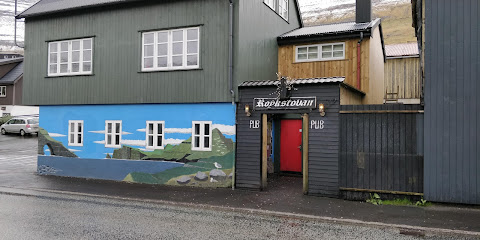
Brimborg
Experience the authentic flavors of the Faroe Islands at Brimborg, a cozy restaurant in Gøtugjógv offering locally-sourced culinary delights.
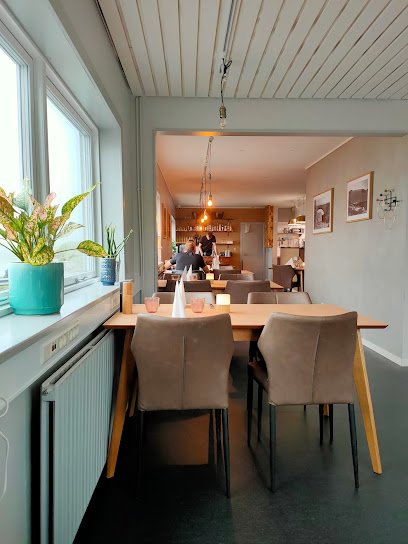
Glitnir
Discover Glitnir, the lively bar in Tórshavn, where local charm meets a vibrant atmosphere and exquisite drink selection.

Somwang Thaifood
Discover the flavors of Thailand in the heart of Strendur, Faroe Islands, at Somwang Thaifood – your gateway to an authentic culinary adventure.
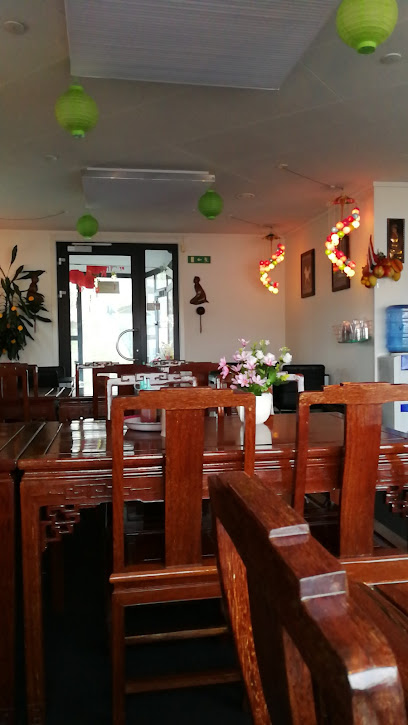
Blábar
Experience the vibrant nightlife of Tórshavn at Blábar, where live music meets a cozy atmosphere and delightful drinks.
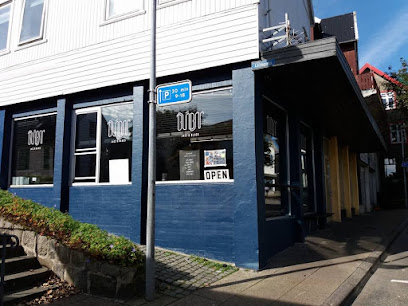
Tórshøll
Experience the charm of Tórshøll, where locals and tourists unite over unique Faroese brews and a cozy atmosphere in Tórshavn.
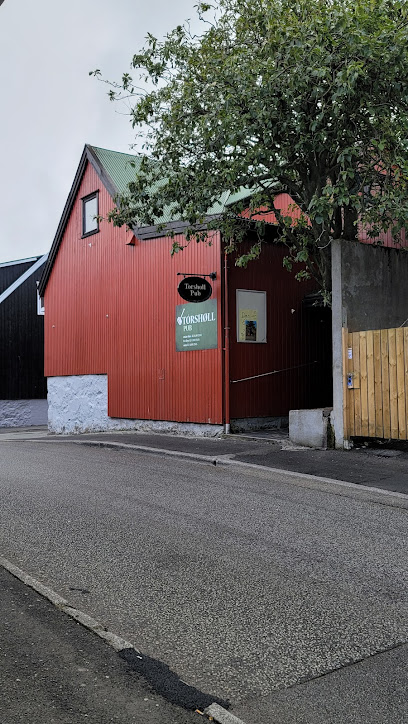
Maverick
Experience the vibrant atmosphere and local brews at Maverick, the must-visit bar in Klaksvík, Faroe Islands.
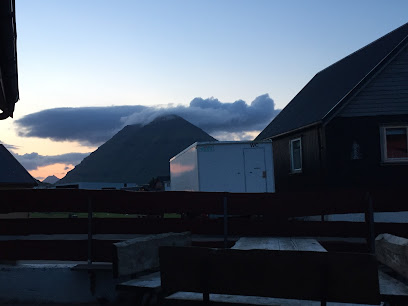
Landskrona Sports Bar
Experience the thrill of live sports, delicious drinks, and a vibrant atmosphere at Landskrona Sports Bar in Tórshavn.
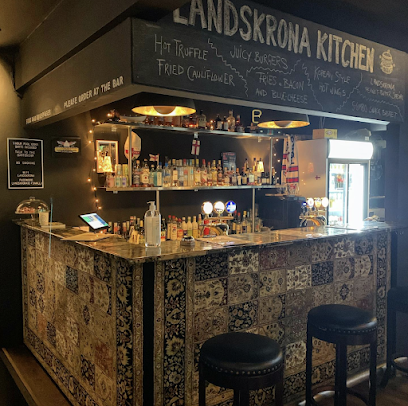
Bjórkovin, the Beer Hub
Experience the vibrant nightlife at Bjórkovin, Tórshavn's premier bar for craft beer enthusiasts and social butterflies.
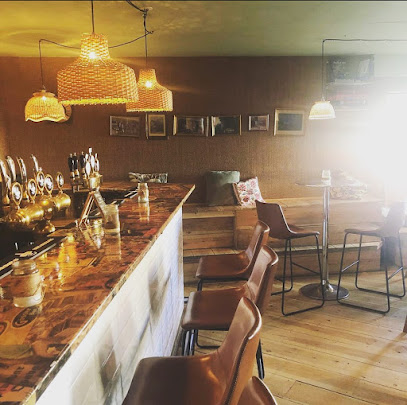
Mass & Mia
Experience local flavors and the vibrant atmosphere at Mass & Mia, Tórshavn's charming bar for travelers seeking authentic Faroese hospitality.

Molly’s
Experience the cozy ambiance and local flavors at Molly's, a charming bar nestled in the heart of Klaksvík, Faroe Islands.
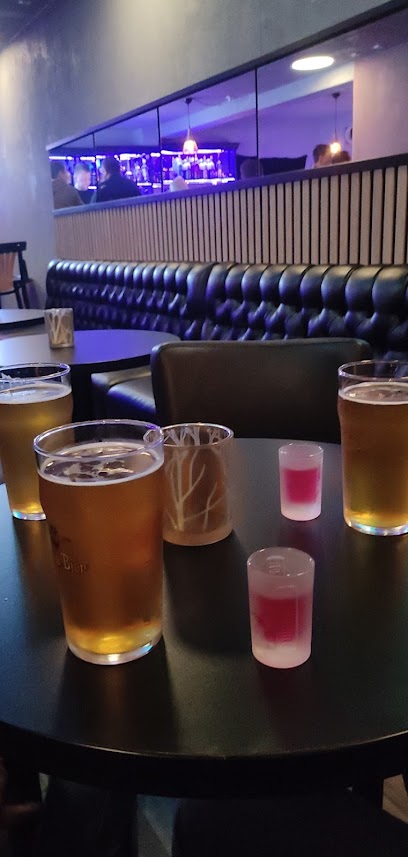
Local Phrases about Eysturoy Island
-
- HelloHalló
[ha-loh] - GoodbyeFarvæl
[far-vil] - YesJa
[yah] - NoNei
[nay] - Please/You're welcomeVælkomin
[vayl-koh-min] - Thank youTakk fyri
[tahk fur-ee] - Excuse me/SorryFyrirgev
[feer-ir-gev] - How are you?Hvussu gongur tú?
[hvoo-soo gohn-goor too] - Fine. And you?Gott. Og tú?
[got oh too] - Do you speak English?Talar tú enskt?
[tah-lar too en-skt] - I don't understandEg skilji ikki
[ay skil-yee ee-kee]
- HelloHalló
-
- I'd like to see the menu, pleaseEg vil síggja matseðilin, vænta
[ay veal see-yah mat-seh-dil-een vayn-tah] - I don't eat meatEg eti ikki kjøt
[ay eh-tee ee-kee chyut] - Cheers!Skál!
[skowl] - I would like to pay, pleaseEg vil gjalda, vænta
[ay veal yal-da vayn-tah]
- I'd like to see the menu, pleaseEg vil síggja matseðilin, vænta
-
- Help!Hjálp!
[hyowlp] - Go away!Far út!
[far oot] - Call the Police!Ring politi!
[ring poh-lee-tee] - Call a doctor!Ring ein læknari!
[ring ain layk-nah-ree] - I'm lostEg er týstur
[ay air toost-ur] - I'm illEg er sjúkur
[ay air shoo-kur]
- Help!Hjálp!
-
- I'd like to buy...Eg vil keypa...
[ay veal chee-pah] - I'm just lookingEg lurki bara
[ay loor-kee bar-a] - How much is it?Hvat kostar tað?
[kvat koh-star tadh] - That's too expensiveTað er ov dýrt
[tadh air ohv deer-t] - Can you lower the price?Kanstu lægga prísin?
[kan-stoo lay-gah pree-sin]
- I'd like to buy...Eg vil keypa...
-
- What time is it?Hvat er klokkan?
[kvat air klohk-ahn] - It's one o'clockTað er eitt
[tadh air ay-t] - Half past (10)Hálvgert tíggju
[hahlv-gert tee-yoo] - MorningMorgun
[mohr-goon] - Afternooneftirmeðgongd
[eft-eer-meth-gongd] - EveningKvøld
[kvul-d] - YesterdayÍ gjár
[ee g-yar] - TodayÍ dag
[ee dah] - TomorrowÍ morgin
[ee mohr-gin] - 1Eitt
[ay-t] - 2Tvey
[tvay] - 3Trý
[tree] - 4Fýra
[feer-a] - 5Fimm
[feem] - 6Seks
[seks] - 7Sjey
[shay] - 8Átta
[ow-tah] - 9Niðan
[nee-than] - 10Tíggju
[tee-yoo]
- What time is it?Hvat er klokkan?
-
- Where's a/the...?Har er ein/hetta...?
[har air ain/het-tah] - What's the address?Hvat er adressan?
[kvat air ah-dress-ahn] - Can you show me (on the map)?Kanstu vísa mær (á kortinum)?
[kan-stoo vee-sah my-ar (ow kort-ee-num)] - When's the next (bus)?Nær kemur næsta (buss)?
[nair kay-moor nyst-a (boos)] - A ticket (to ....)Ein miði (til ....)
[ain mee-thee (til)]
- Where's a/the...?Har er ein/hetta...?
History of Eysturoy Island
-
Eysturoy Island, like much of the Faroe Islands, was settled by Norse Vikings in the 9th century. These seafaring warriors and farmers established small communities, utilizing the island’s natural harbors and fertile land for agriculture and livestock. The Viking legacy is still palpable, with archaeological sites such as ancient ruins and burial mounds dotting the landscape.
-
One of Eysturoy’s most notable historical events is the Battle of Mannafallsdalur, which took place in the early 11th century. This fierce conflict between rival Viking clans left a lasting impact on the island's culture and history. The exact location of the battle is marked by a series of memorial stones, providing insight into the island's tumultuous past.
-
In the 11th century, the Faroe Islands, including Eysturoy, underwent a significant transformation with the arrival of Christianity. The establishment of churches and the spread of Christian doctrine gradually replaced the old Norse pagan beliefs. The Kirkjubøur Cathedral, though primarily associated with Streymoy, influenced Eysturoy’s religious landscape, with remnants of ancient churches still visible today.
-
Eysturoy’s geographical location and natural harbors made it a crucial part of the Faroe Islands’ maritime history. The island's inhabitants have long relied on fishing, whaling, and seafaring for their livelihoods. The village of Eiði, with its picturesque harbor, exemplifies this maritime heritage. Traditional Faroese boats and fishing techniques are still practiced, preserving a way of life that has endured for centuries.
-
In the mid-14th century, the Black Death reached the Faroe Islands, including Eysturoy. This devastating plague drastically reduced the population and had profound social and economic impacts. Many of the isolated communities on Eysturoy were severely affected, and the island's recovery was slow but resilient, shaping the character of its people.
-
Eysturoy, like the rest of the Faroe Islands, came under Danish rule in the 14th century. This period marked significant changes in administration, trade, and cultural exchange. The influence of Danish governance can still be seen in the island’s architecture, language, and customs. Historical buildings and records from this era provide a window into the complexities of Faroese-Danish relations.
-
The 20th century brought modernization and infrastructural development to Eysturoy. The construction of roads, bridges, and tunnels, such as the Norðoyatunnilin connecting Eysturoy to Borðoy, facilitated greater connectivity and economic growth. The island’s towns and villages, like Fuglafjørður and Runavík, have evolved into vibrant communities while retaining their unique cultural heritage.
Eysturoy Island Essentials
-
Eysturoy Island is part of the Faroe Islands and can be accessed primarily via Vágar Airport, the only airport in the Faroe Islands, located on Vágar Island. From Vágar Airport, you can take a domestic flight to Eysturoy or opt for a ferry service. Alternatively, you can drive across the islands using the well-connected roads and undersea tunnels. The journey from Vágar to Eysturoy by car takes approximately 1.5 hours.
-
Eysturoy Island offers various transportation options. Public buses connect most villages and towns, though schedules can be limited during weekends. Renting a car is a convenient option for exploring the island at your own pace. Taxis are also available but can be expensive. For a unique experience, consider using the extensive network of hiking trails that link many of the island's attractions.
-
The official currency in the Faroe Islands is the Faroese króna (DKK), which is pegged to the Danish krone. Credit cards are widely accepted in hotels, restaurants, and larger shops, but it's advisable to carry some cash for smaller establishments and rural areas. ATMs are available in most towns, but it is wise to withdraw sufficient cash in larger towns before heading to more remote areas.
-
Eysturoy Island is generally very safe for tourists, with low crime rates. However, it is always advisable to take standard precautions, such as keeping an eye on your belongings in crowded places and avoiding isolated areas after dark. There are no specific high-crime areas targeting tourists, but it is always best to stay vigilant and aware of your surroundings.
-
In case of emergency, dial 112 for immediate assistance, which connects you to police, fire, and medical services. Eysturoy has several medical facilities, and the main hospital in Tórshavn on Streymoy Island is also accessible. It is recommended to have travel insurance that covers medical emergencies. Pharmacies are available in the larger towns for minor health issues and over-the-counter medications.
-
Fashion: Do dress in layers and wear waterproof clothing, as the weather can be unpredictable. Avoid wearing overly flashy or revealing clothing. Religion: Do respect local customs and traditions, especially when visiting churches. Public Transport: Do be respectful and give up your seat to elderly passengers. Don't eat or drink on public transport. Greetings: Do greet people with a smile and a simple 'Halló'. Eating & Drinking: Do try local delicacies such as fermented fish and whale meat. Don't refuse hospitality, as it is considered impolite.
-
To experience Eysturoy Island like a local, visit the smaller villages and engage with residents who are often friendly and willing to share their culture and traditions. Attend local events and festivals to get a deeper understanding of Faroese culture. Don't miss hiking to the top of Slættaratindur, the highest peak in the Faroe Islands, for breathtaking views. Additionally, try fresh seafood from local markets and enjoy a boat tour to see the island's stunning coastline and birdlife.
Trending Landmarks in Eysturoy Island
-
Kirkjubømúrurin
-
Gjógv Natural Harbour
-
Fossá
-
The Nordic House
-
Skansin
-
View on Mullafossur and Gasadalur village
-
The Seal Woman (Kópakonan)
-
Trælanípa
-
The National Gallery of The Faroe Islands
-
Tjóðsavnið (Faroe Islands National Museum)
-
Kallur Lighthouse
-
Dúvugarðar Heritage Farm
-
Slave Cliff (Lake Above the Ocean)
-
Giljanes Hostel & Campsite
-
Klakkur
Nearby Cities to Eysturoy Island
-
Things To Do in Hvalvík
-
Things To Do in Strendur
-
Things To Do in Kvívík
-
Things To Do in Runavík
-
Things To Do in Klaksvik
-
Things To Do in Vestmanna
-
Things To Do in Sandavágur
-
Things To Do in Tórshavn
-
Things To Do in Miðvágur
-
Things To Do in Argir
-
Things To Do in Sorvagur
-
Things To Do in Nólsoy
-
Things To Do in Tvøroyri
-
Things To Do in Vágur
-
Things To Do in Seydisfjordur










